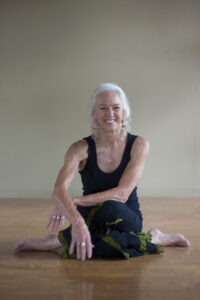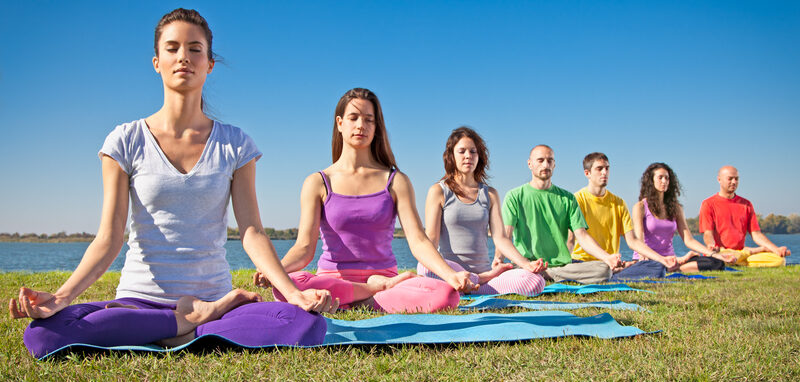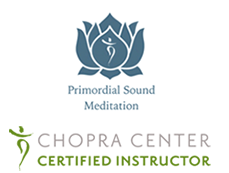Cultivating Contentment
Cultivating contentment is on my mind.
It’s natural to reflect back on the happier moments of life. Reflections like these often include a review of peak moments such as weddings, births, major birthdays, and exciting trips. Back in my corporate working life, I treasured big business achievements as well as promotions, recognition, and awards.
I now seem to look at life with a new lens. The past two years of living life during a pandemic have given me a new perspective.
The pandemic meant the cancellation, postponement, or re-working of weddings, birthday gatherings, and travel.
Instead of focusing so much on the pursuit of happiness through peak moments, I have thought a lot more about how happiness is created.
Because I now realize that I am capable of creating my own level of happiness just in the way I look at life.
For me, that level of expanded happiness begins with a foundation of contentment. There is a Sanskrit word for this concept, called Santosha.
If you have ever studied the Eight Limbs of Yoga, you may remember the second of the Niyamas; Santosha. Santosha means contentment.
What is the secret to living with greater contentment?
Be content with what you have; rejoice in the way things are. When you realize there is nothing lacking, the whole world belongs to you. Lao Tzu
This is the basis of happiness.
Being happy doesn’t mean that everything is perfect. But life can unfold with less struggle.
Each person has a set point or a baseline of happiness. We all experience peaks of joy and moments of enthusiastic excitement. But most of us spend life at our emotional set point.
Studies have shown that even after major trauma in life, over time we are restored to our former level of balance.
While research studies continue to explore why some people’s happiness baselines are higher than others, a healthy goal for everyone is to spend more time in contentment.
Achieving greater contentment is about cultivating inner peace and joy that is not dependent on the external events in our lives.
My mission should I choose to accept it, is to find peace with exactly who and what I am. To take pride in my thoughts, my appearance, my talents, my flaws, and to stop this incessant worrying that I cannot be loved as I am. – Anais Nin
Life is imperfect. The world’s wisdom traditions tell us that it is possible to transcend the surface level of the mind where restlessness, anxiety, and conflict often lurk.
Meditation is a daily practice that allows the imperfections in life to be transcended as you connect on a regular basis to your inner wisdom.
Transcendence sounds mystical, but it is actually practical. When you meditate regularly, you can move beyond the surface level of the mind to find the level of being that is contentment.
When you cultivate contentment, you have a deep inner knowing that no matter what happens, all is well and all will be well.
What we think and feel about our circumstances greatly influences our happiness. When you cultivate contentment, anxiety and insecurity stop being your daily companions.
You realize that the best time of life is now.
Experiencing inner contentment happens every time you transcend in meditation. The practice of santosha gets easier the more you meditate.
With greater contentment comes less attachment to external forces outside yourself.
Contentment magnifies your gratitude for what already exists in your life. You begin to detach from desiring something new and different and simply enjoy what you have. You also feel happier with who you are — your own unique, perfectly imperfect bundle of personality and eccentricities.
At the end of the day, what matters most is Santosha; deep abiding, everlasting contentment. ~ Sumukhi
Greater happiness comes from finding contentment in your present situation. That is santosha.
It’s about releasing the struggle for what you don’t have and accepting with joy and gratitude what you do have.
Regardless of what happens outside yourself, santosha is a peace inside that doesn’t change.
Meditation mindfulness practices ask you to focus on this present moment without judgment. That is fundamental to achieving greater contentment, or santosha.
The focus is on this moment, right now. You stop projecting into the future about what you wish would happen, what you want to do or have. Similarly, you stop dwelling on past memories of what you should have done differently. Instead, you find contentment with what is right now.
Here are 3 practical ways to bring more contentment into your daily life:
Rejoice in the present moment. Release the focus on the past or the future. Let go of anything beyond your control. Bring your awareness to what is happening at this very moment.
Meditate. Build a daily practice so that you train your mind to drop into stillness and connect with your inner wisdom. This helps you cultivate contentment and equanimity.
Practice Gratitude. Focus on what is good in your life. As you pay attention to what you are grateful for, a surprising thing happens. A virtuous cycle begins. More good things begin to flow into your life.
virtuous cycle begins. More good things begin to flow into your life.
If you would like to discover more about yourself and find ways to fill your life with greater contentment, meaning, and purpose, I encourage you to take a look at my courses. The Soul Artist Experience 1.0 is the first course in my signature series.
If you would like to begin or deepen a daily meditation practice, check out my Enrich your Life with Daily Meditation and Primordial Sound Meditation courses.
And a new series of creative courses are under development and will be launched soon.
Thank you for reading this post. Feel free to share it.
Find out more about my journey through my book on Amazon: Vision Quest; A Journey to Happiness by Jane Ramsey.
Watch my YouTube video about freeing your inner artist.
Watch my YouTube video explaining the courses I teach.
Read how Creativity is like Meditation here.
Learn the Benefits of Pranayama.
Interested in the Universal Laws? The Blogs for each of the twelve Laws are found below:
Divine Oneness here.
Vibration here.
Correspondence here.
Attraction here.
Inspired Action here.
Perpetual Transmutation of Energy here.
Cause and Effect here.
Compensation here.
Relativity here.
Polarity here.
Rhythm here.
Gender here.
Read how Creativity is like Meditation here.

Jane Ramsey is an Executive Contributor for Brainz Magazine








